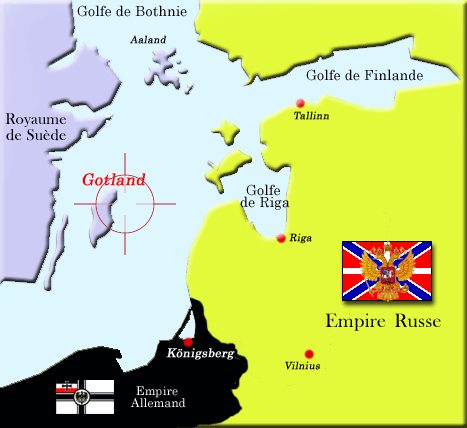
 Reichsmarine vs
Reichsmarine vs  Russian Navy
Russian Navy
Fire on the Baltic
The fact that the Baltic did not saw naval major battles like Heligoland or Jutland don’t have to mask the myriad of naval actions that occurred in this war between the Russian Navy -albeit reduced after the crippling losses of 1905 in this theater- and the powerful Reichsmarine, that kept the bulk of the Hochseeflotte facing the north sea, waiting for opportunities to engage the Royal Navy.
This battle of Gotland, also called Battle of Åland Islands occurred nearby one of the largest island (if not the largest) of the baltic sea, the fortress guarding Swedish east coast. These already seen (and will see) many other clashes between German and Russian ships, but also testified of age-old clashes between Russians and Swedes in the past. This was a serious gun battle between cruisers of many types from both sides, the Germans loosing eventually the Albatross, and the Russian retiring with two badly damaged armoured cruisers.
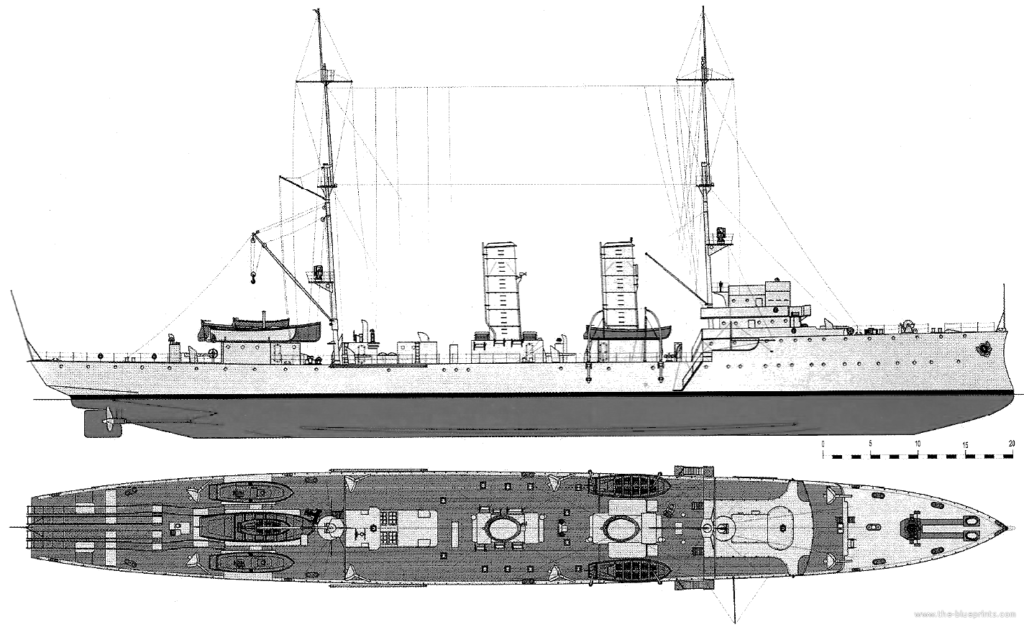
Blueprint of the SMS Albatross
The day before the battle of Gotland, Kommodore Johannes Von Karf had been ordered to anchor a vast minefield off the Aäland Islands, closing the Gulf of Bothnia. He departed with the minelayer cruiser Albatross (frigate captain Fritz West), escorted by the armoured cruiser Roon, and the SMS Augsburg, Lübeck, as well as 12 destroyers. Following Odensholm’s action on 26 August, the Russians seized the codebooks and signals from the Hochseeflotte, and thus intercepted messages, enabling them to know the squadron’s exact departure. On the 2nd, a force comprising the armoured cruisers Admiral Makaroff and Bayan, assisted by the cruisers Oleg and Bogatyr sailed from Saint-Petersburg under the orders of Rear Admiral Mikhail Bakhirev in the hope of intercepting it. This force was joined and assisted by a British submersible.
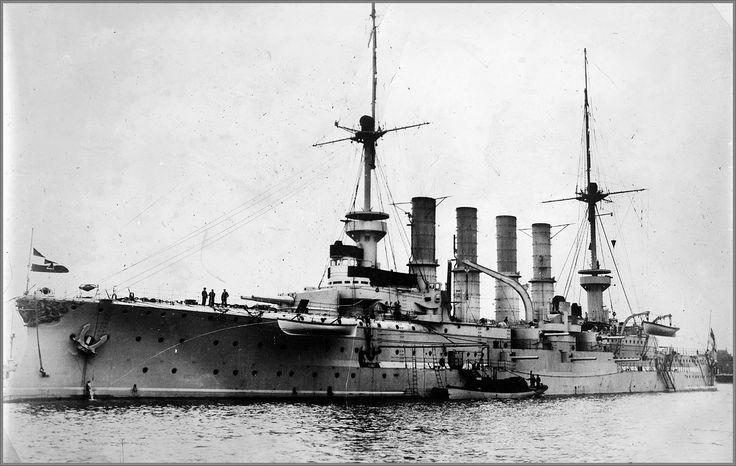
SMS roon (1907), this class preceded the Scharnhorst and was strongly related
On the morning of the 2d, the German fleet was mooring mines in front of the Aaland Islands, when the black plumes of the Russian squadron were spotted. Immediately the operations in progress were abandoned, and the ships turned and headed south. However, the time to carry out the maneuver, the Russian cruisers were at gun range, and the slowest cruiser, SMS Albatross was catch and fired upon. The ship only had a few 88 mm pieces to oppose 203 and 152 mm guns on the Russian cruisers. This resembled quickly therefore to a real execution. However, the Roon and two light cruisers replied, but the duel of artillery was not conclusive. The two fleets advanced in parallel, heading south, and arrived off Gotland when Von Karf was informed of the arrival of two other armoured cruisers, the Prinz Heinrich and the Prinz Adalbert, which just sailed to the rescue. The balance was about to swap in favor of the Germans.
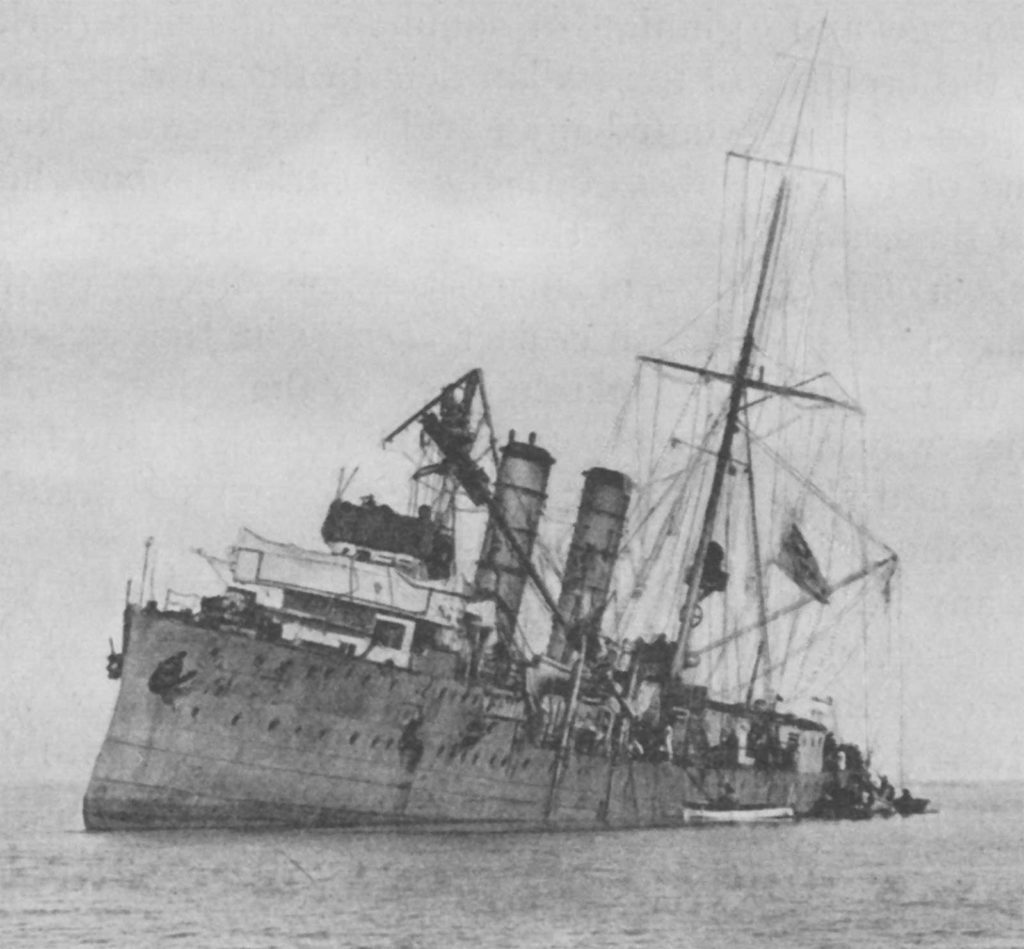
The minelaying cruiser Albatross failed after her fight against the Oleg and the Bogatyr.
The Russians for their part, brought out the Rurik, one of the most powerful armoured cruisers in the world, assisted by the destroyer Novik, no less formidable. They just set sail at the time the news of the clash off the Aaland Islands, and force-steamed south-west in an attempt to cut off Von Karf’s retreat. The threat was very serious, and the battle began to swap again, and this time, taking on a disastrous scale for the Germans. The Albatross, caught by the Oleg and Bogatyr, was severely hit, her machines partially drowned, drifting, silenced, crippled, and eventually ran aground on a sand bank off Gotland. Meanwhile Von Karf from his flagship Admiral Roon, was attacked by the Bayan and Makaroff, being hit several times and severely damaged. Getting the news of the arrival of the Rurik Von karf decided to break off the fight and retreat south-east towards Königsberg.
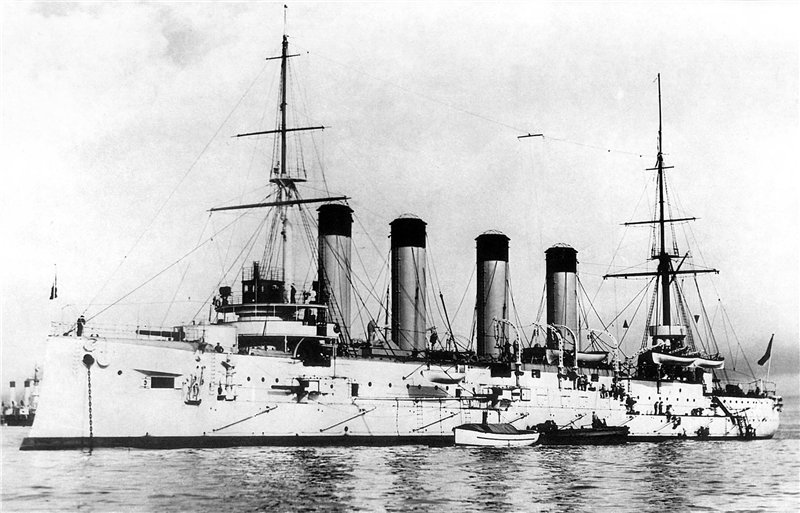
Russian cruiser Bayan
The two German armoured cruisers which came to reinforce, just informed of Von Karf’s decision to retreat, decided to head south, but the Prinz Adalbert was intercepted by British submarine E9 waiting in ambush, and was torpedoed. She survived thanks to the promptness of her crew, clogging the leaks with Makaroff slippers, and thus avoiding the entire engine room being submerged. The cruiser dragged herself to the coast and ran aground on a sand bank off Danzig. She would be later towed and repaired, but shortly after her return in service, on 23 October, she will be torpedoed once again, this time by E8, and sent to the bottom for good.
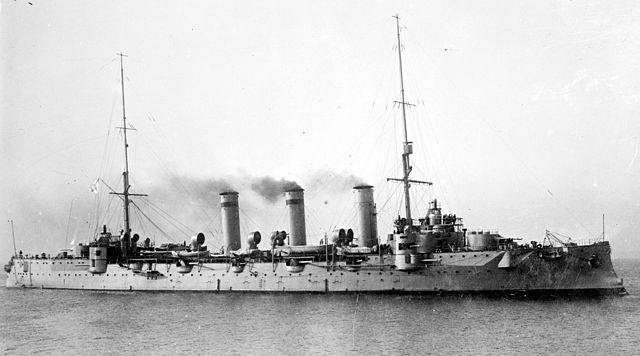
Russian Cruiser Oleg
In the end, Russian losses were difficult to evaluate but it is clear that the Bayan and Makaroff received some hits. The exact balance of the Russian side remains mysterious. In any case, the verdict was severe for the Germans, who, without ever suspecting being spied on or capable to explain the sudden arrival of the Russians to this point, lost the Albatross, which they never attempted to tow. Her surviving crew reached the boats in good order, sailing to the coast of Gotland (Sweden), and from there rejoined Germany afterwards. The Albatross was towed to be broken up later in 1921. The Germans were also deprived of the Roon and Prinz Adalbert, in repairs for long months. Worst still, mines of the Aaland Islands were quickly raised dredged by the Russians. So in the end, we have to see this battle of Gotland as a Russian tactical and strategic victory (three ships eliminated and a minefield).

 Latest Facebook Entry -
Latest Facebook Entry -  X(Tweeter) Naval Encyclopedia's deck archive
X(Tweeter) Naval Encyclopedia's deck archive Instagram (@navalencyc)
Instagram (@navalencyc)





 French Navy
French Navy Royal Navy
Royal Navy Russian Navy
Russian Navy Armada Espanola
Armada Espanola Austrian Navy
Austrian Navy K.u.K. Kriegsmarine
K.u.K. Kriegsmarine Dansk Marine
Dansk Marine Nautiko Hellenon
Nautiko Hellenon Koninklije Marine 1870
Koninklije Marine 1870 Marinha do Brasil
Marinha do Brasil Osmanlı Donanması
Osmanlı Donanması Marina Do Peru
Marina Do Peru Marinha do Portugal
Marinha do Portugal Regia Marina 1870
Regia Marina 1870 Nihhon Kaigun 1870
Nihhon Kaigun 1870 Preußische Marine 1870
Preußische Marine 1870 Russkiy Flot 1870
Russkiy Flot 1870 Svenska marinen
Svenska marinen Søværnet
Søværnet Union Navy
Union Navy Confederate Navy
Confederate Navy Armada de Argentina
Armada de Argentina Imperial Chinese Navy
Imperial Chinese Navy Marinha do Portugal
Marinha do Portugal Mexico
Mexico Kaiserliche Marine
Kaiserliche Marine 1898 US Navy
1898 US Navy Sovietskiy Flot
Sovietskiy Flot Royal Canadian Navy
Royal Canadian Navy Royal Australian Navy
Royal Australian Navy RNZN Fleet
RNZN Fleet Chinese Navy 1937
Chinese Navy 1937 Kriegsmarine
Kriegsmarine Chilean Navy
Chilean Navy Danish Navy
Danish Navy Finnish Navy
Finnish Navy Hellenic Navy
Hellenic Navy Polish Navy
Polish Navy Romanian Navy
Romanian Navy Turkish Navy
Turkish Navy Royal Yugoslav Navy
Royal Yugoslav Navy Royal Thai Navy
Royal Thai Navy Minor Navies
Minor Navies Albania
Albania Austria
Austria Belgium
Belgium Columbia
Columbia Costa Rica
Costa Rica Cuba
Cuba Czechoslovakia
Czechoslovakia Dominican Republic
Dominican Republic Haiti
Haiti Hungary
Hungary Honduras
Honduras Estonia
Estonia Iceland
Iceland Eire
Eire Equador
Equador Iran
Iran Iraq
Iraq Latvia
Latvia Liberia
Liberia Lithuania
Lithuania Mandchukuo
Mandchukuo Morocco
Morocco Nicaragua
Nicaragua Persia
Persia San Salvador
San Salvador Sarawak
Sarawak Uruguay
Uruguay Venezuela
Venezuela Zanzibar
Zanzibar Warsaw Pact Navies
Warsaw Pact Navies Bulgaria
Bulgaria Hungary
Hungary

 Bundesmarine
Bundesmarine Dutch Navy
Dutch Navy Hellenic Navy
Hellenic Navy Marina Militare
Marina Militare Yugoslav Navy
Yugoslav Navy Chinese Navy
Chinese Navy Indian Navy
Indian Navy Indonesian Navy
Indonesian Navy JMSDF
JMSDF North Korean Navy
North Korean Navy Pakistani Navy
Pakistani Navy Philippines Navy
Philippines Navy ROKN
ROKN Rep. of Singapore Navy
Rep. of Singapore Navy Taiwanese Navy
Taiwanese Navy IDF Navy
IDF Navy Saudi Navy
Saudi Navy Royal New Zealand Navy
Royal New Zealand Navy Egyptian Navy
Egyptian Navy South African Navy
South African Navy






























 Ukrainian Navy
Ukrainian Navy dbodesign
dbodesign